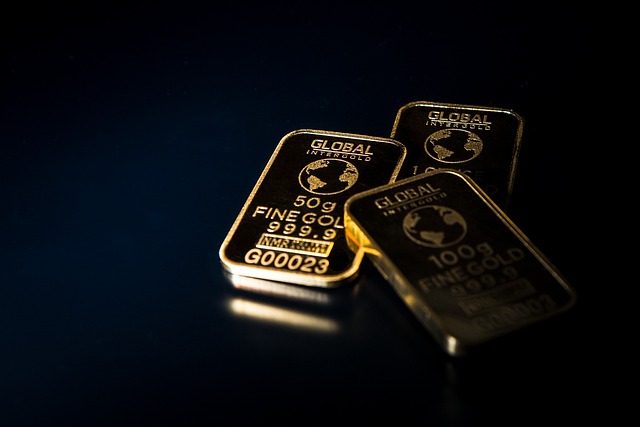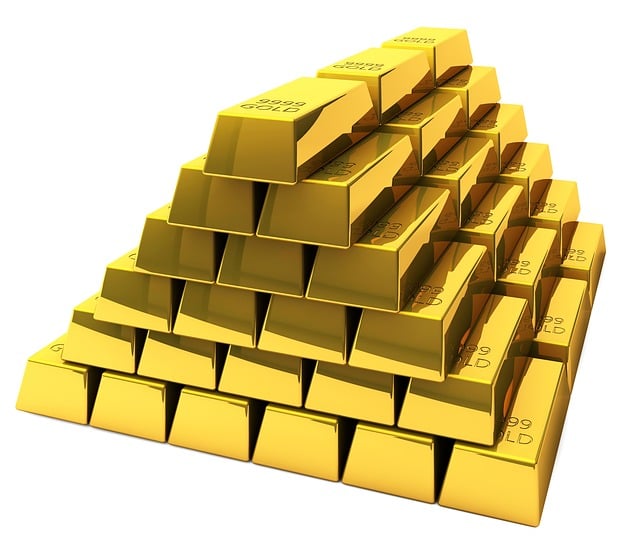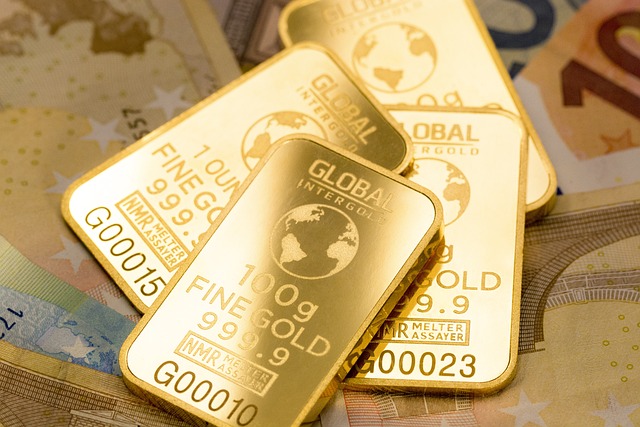
Legacy Precious Metals offer a traditional and reliable investment method with a history of stabilizing and diversifying portfolios. They consist of gold, silver, platinum, and palladium, which maintain intrinsic value and have historically preserved wealth by acting as a hedge against inflation, currency devaluation, and geopolitical risks. Investors can benefit from their potential to appreciate during economic instability, ensuring financial stability. These metals provide tangible ownership and protect against credit risks inherent in certain paper assets. Legacy Precious Metals are a compelling choice for wealth preservation and are integrated into modern legacy planning due to their predictability and security. They offer a proven track record of maintaining value over time and are valued for their role in inheritance planning. When considering an investment, it's crucial to research market trends, personal financial objectives, risk tolerance, and investment timelines. Investors should also consider the liquidity of different precious metals forms, such as bullion versus rarer collectibles, and select a reputable dealer. Legacy Precious Metals are resilient investments influenced by factors like macroeconomic conditions, central bank policies, and industrial demand. They can offer stability amidst market volatility and should be integrated into a diversified investment strategy with an understanding of the latest market movements for effective long-term planning.
Exploring the intricacies and enduring value of Legacy Precious Metals, this comprehensive guide navigates investors through the nuances of incorporating these assets into their portfolios. Delve into the historical significance that has cemented precious metals as a cornerstone in wealth preservation. Understand the different forms of investment—from bullion coins to rare numismatic items—and learn how to evaluate purity and quality. This article breaks down the impact of market trends, tax considerations, and legal regulations, providing insights from seasoned investors. With expert guidance on storage security, portfolio diversification, and liquidity, you’ll gain a solid foundation for making informed decisions in precious metals investment. Whether you’re a novice or an experienced investor, this guide offers valuable strategies to enhance your financial legacy responsibly.
- Understanding Legacy Precious Metals and Their Role in Investment Portfolios
- The Historical Significance of Precious Metals in Wealth Preservation
- Key Considerations Before Investing in Legacy Precious Metals
- Types of Legacy Precious Metals: Gold, Silver, Platinum, and Palladium
- How to Evaluate the Purity and Quality of Legacy Precious Metals
- The Impact of Market Trends on Legacy Precious Metals Investment
Understanding Legacy Precious Metals and Their Role in Investment Portfolios

Legacy Precious Metals represent a traditional and time-honored investment vehicle that has long been recognized for its role in diversifying and stabilizing investment portfolios. Unlike paper assets, which can be subject to the volatility of the market and economic conditions, precious metals like gold, silver, platinum, and palladium have intrinsic value and a historical reputation for maintaining their worth over time. Investing in these metals through Legacy Precious Metals can offer investors a tangible asset that is often seen as a hedge against inflation, currency devaluation, and geopolitical uncertainties. The allure of precious metals lies not only in their ability to preserve wealth but also in their potential to appreciate in value during times of economic instability, thereby safeguarding an investor’s financial security.
When integrating Legacy Precious Metals into an investment portfolio, it is crucial to consider the role they will play within your broader financial strategy. These metals can serve as a counterbalance to other investments like stocks and bonds, which can be more sensitive to market fluctuations. The inclusion of physical precious metals can enhance diversification, potentially reducing overall portfolio risk. Additionally, holding actual bullion or coins provides a level of control over the asset, as it is not subject to the credit risk associated with certain paper assets or investment vehicles tied to commodity markets. For investors looking for stability and a historical track record of maintaining value, Legacy Precious Metals can be an attractive addition to their investment portfolios.
The Historical Significance of Precious Metals in Wealth Preservation

Throughout history, precious metals have held a revered status in the realm of wealth preservation and inheritance planning. Gold, silver, platinum, and palladium have long been recognized for their enduring value and stability amidst economic turmoil or currency fluctuations. These metals’ role in financial systems dates back to ancient civilizations, where they were used not only as currency but also as a means to secure wealth across generations. The concept of legacy precious metals is deeply rooted in this historical significance, where the accumulation and safekeeping of these metals were critical to maintaining and transferring wealth. For instance, during periods when fiat currencies lost value due to inflation or devaluation, holdings of gold and silver preserved purchasing power, illustrating their role as a hedge against such economic pressures. This historical pattern underscores the continued relevance of precious metals in modern legacy planning strategies, where they serve as a tangible asset to protect and pass on wealth, ensuring its longevity and integrity over time. Investors looking to include legacy precious metals in their portfolios are thus drawn to the security and predictability these assets offer, positioning them as a timeless element of wealth preservation strategies.
Key Considerations Before Investing in Legacy Precious Metals

When considering an investment in Legacy Precious Metals, it’s crucial to conduct thorough research and understand the market dynamics. Key among these considerations are the historical performance patterns of precious metals like gold, silver, platinum, and palladium, which have traditionally acted as hedges against inflation and economic uncertainty. Investors should assess their own financial goals, risk tolerance, and investment horizon, ensuring that a precious metals allocation aligns with their broader portfolio strategy. The liquidity of the assets is another vital factor; while physical bullion has high liquidity, certain rare collectibles may not be as readily convertible to cash.
Furthermore, due diligence is essential when selecting a reputable dealer or custodian for your Legacy Precious Metals investments. Consideration must be given to storage options, whether it’s through secure home storage or insured third-party vaults. Understanding the costs associated with buying, storing, and eventually selling precious metals is also paramount. Lastly, staying informed about geopolitical events, market trends, and regulatory changes that can influence the precious metals market will equip investors to make informed decisions and adapt their strategies accordingly.
Types of Legacy Precious Metals: Gold, Silver, Platinum, and Palladium

Legacy Precious Metals offer investors a tangible asset with a long history of preserving wealth and hedging against inflation and economic uncertainty. Within this category, gold has traditionally been the most sought-after metal for investment purposes due to its historical value and relative stability. Gold coins, bars, and bullion are popular forms of gold investment within Legacy Precious Metals’ portfolio. Silver follows closely as a cost-effective alternative with significant industrial demand, which can amplify its price movements. It’s also notable for its use in electronics, solar panels, and medical applications, providing a dual benefit of both an economic and a strategic investment component.
Moving beyond the more commonly recognized metals like gold and silver, platinum and palladium present unique opportunities within Legacy Precious Metals’ offerings. Platinum is renowned for its rarity and durability, often used in jewelry and, like palladium, in automotive catalytic converters. The demand for these applications can drive their prices independently of broader market trends. Palladium, in particular, has seen a surge in interest due to its limited supply and essential role in reducing emissions in the automotive industry. Both platinum and palladium can serve as diversifiers within an investment portfolio, offering exposure to different market dynamics and potentially enhancing overall returns. Investors considering Legacy Precious Metals should carefully assess the market conditions and their investment goals before allocating a portion of their portfolio to these valuable metals.
How to Evaluate the Purity and Quality of Legacy Precious Metals

When considering an investment in Legacy Precious Metals, it is imperative to assess the purity and quality of the metal you are acquiring. The fineness or purity of gold, silver, platinum, and palladium—the metals under the Legacy Precious Metals umbrella—is a critical factor that influences their intrinsic value and marketability. To evaluate purity, look for the “fineness” hallmark, which indicates the proportion of precious metal to alloy. For example, a 24-karat gold piece should be 99.9% pure. Similarly, silver items are often marked with .925 or 92.5%, denoting 92.5% purity. This hallmark serves as a legal guarantee of the metal’s quality and is a standard set by the precious metals industry. Additionally, purchasing from reputable dealers or those certified by organizations such as the London Bullion Market Association (LBMA) can provide assurance of quality. Always request certificates of authenticity and consider having your metals third-party assayed for additional peace of mind. It’s also advisable to familiarize yourself with the various forms of investment in Legacy Precious Metals, such as coins, bars, and rounds, each with its own market dynamics and storage considerations that can affect both liquidity and long-term value.
The Impact of Market Trends on Legacy Precious Metals Investment

Legacy precious metals represent a time-honored investment strategy that has withstood the test of market fluctuations over centuries. Investors often turn to these metals—gold, silver, platinum, and palladium—as a hedge against inflation and economic uncertainty. The impact of market trends on legacy precious metals investments is multifaceted, influenced by both macroeconomic indicators and geopolitical events. For instance, when economic stability wanes, there’s typically an uptick in the demand for these safe-haven assets. Conversely, a robust global economy with low inflation might lead investors to allocate their capital towards higher-yielding assets, potentially diminishing the appeal of legacy precious metals in the short term.
Understanding market sentiment and trends is crucial for making informed decisions within the realm of legacy precious metals. Trends such as the depreciation of fiat currencies, shifts in central bank policies, and changes in industrial demand for metals like palladium and platinum can all influence the price and investment attractiveness of these assets. Investors should monitor these trends closely, as they can offer opportunities to buy at lower prices or sell at higher ones. A diversified portfolio often includes a strategic allocation to legacy precious metals, serving as a counterbalance to other investments that may be more sensitive to market volatility. Keeping abreast of the latest market dynamics and trends is essential for those seeking to leverage these timeless assets as part of their long-term investment strategy.
When considering the strategic inclusion of legacy precious metals within an investment portfolio, it’s crucial to understand their historical role in wealth preservation and the current market dynamics affecting their value. Legacy precious metals like gold, silver, platinum, and palladium each offer distinct benefits and should be evaluated for purity and quality before investment. Investors must stay informed on market trends to navigate this asset class effectively. This comprehensive guide provides a solid foundation for those looking to incorporate legacy precious metals into their financial strategy, ensuring a well-rounded approach to diversification and risk management. By integrating these timeless assets thoughtfully, investors can enhance portfolio stability and safeguard against economic uncertainties, making them a prudent choice in wealth preservation.







